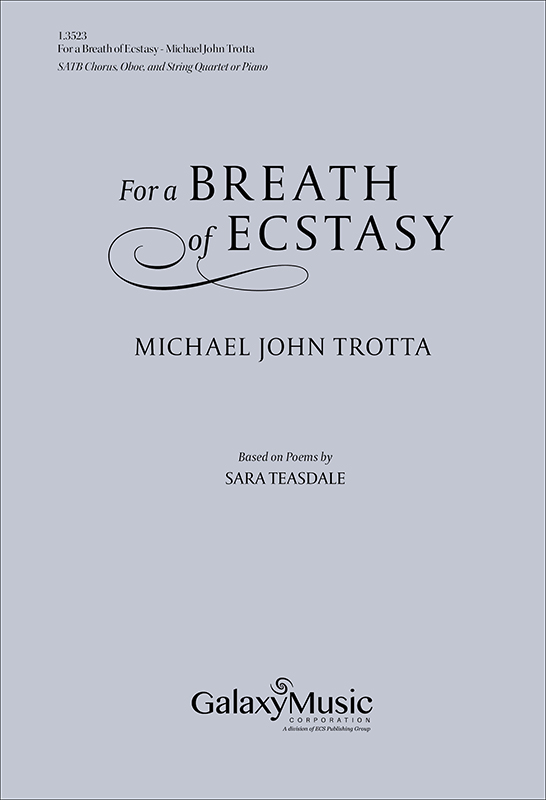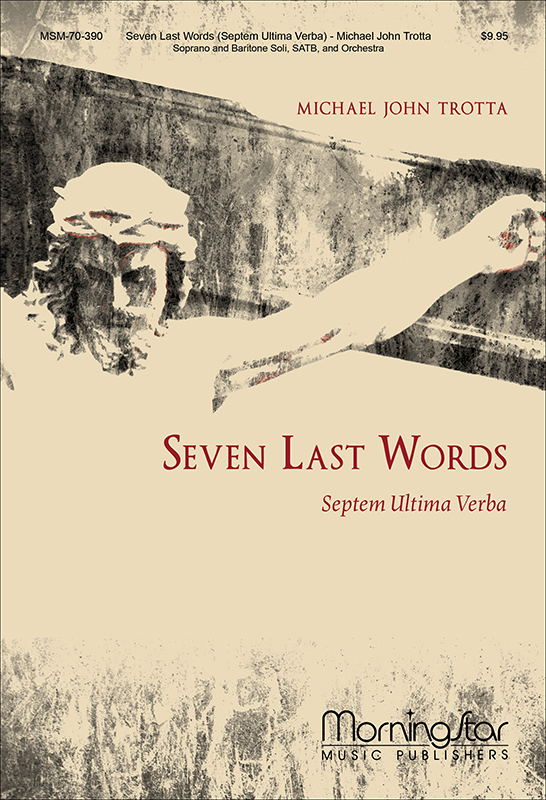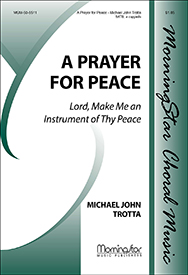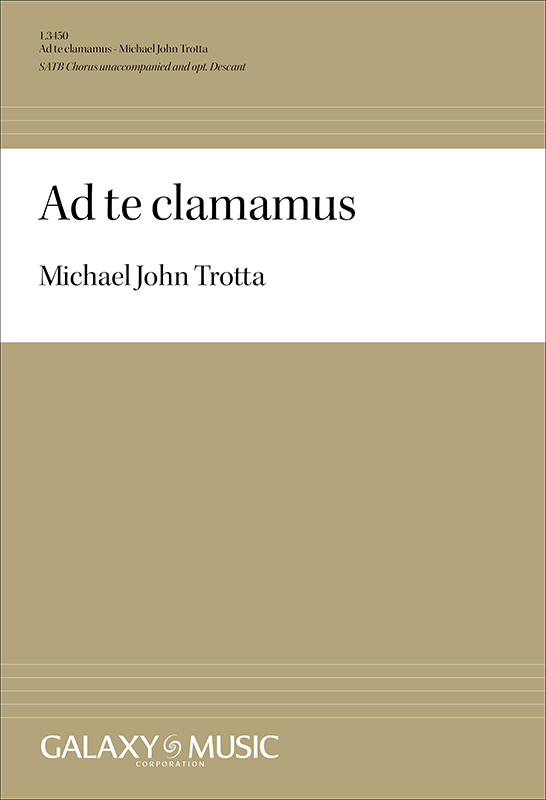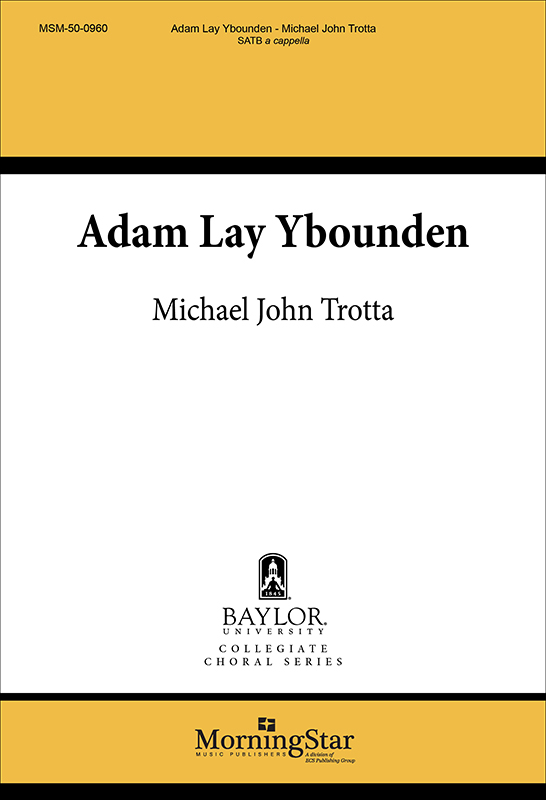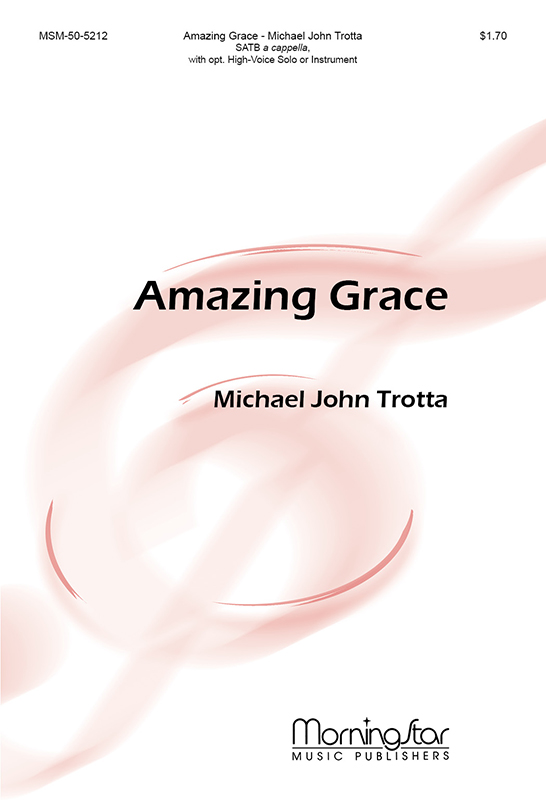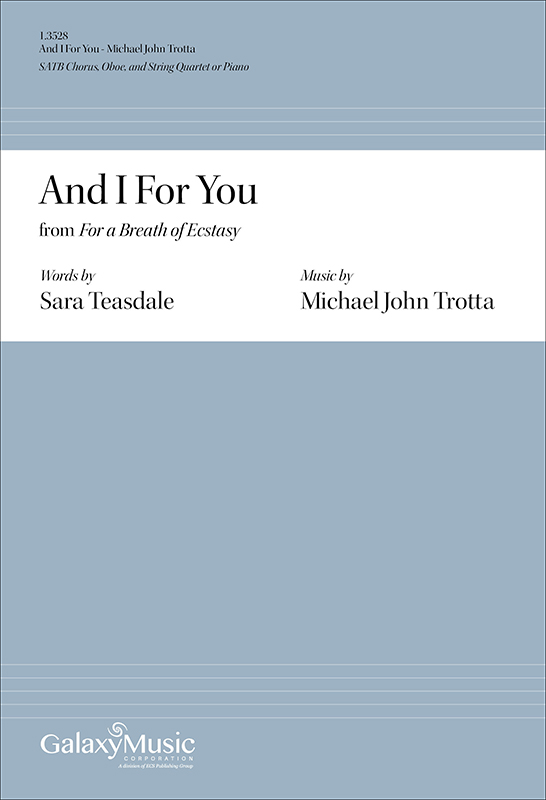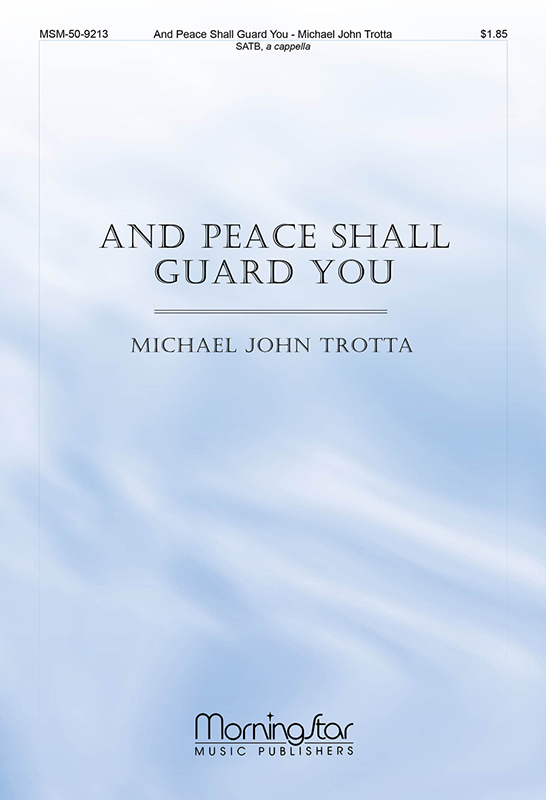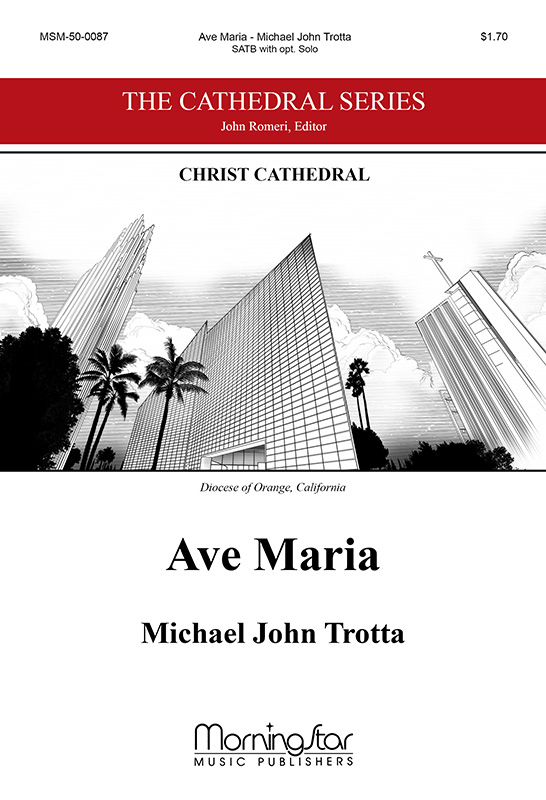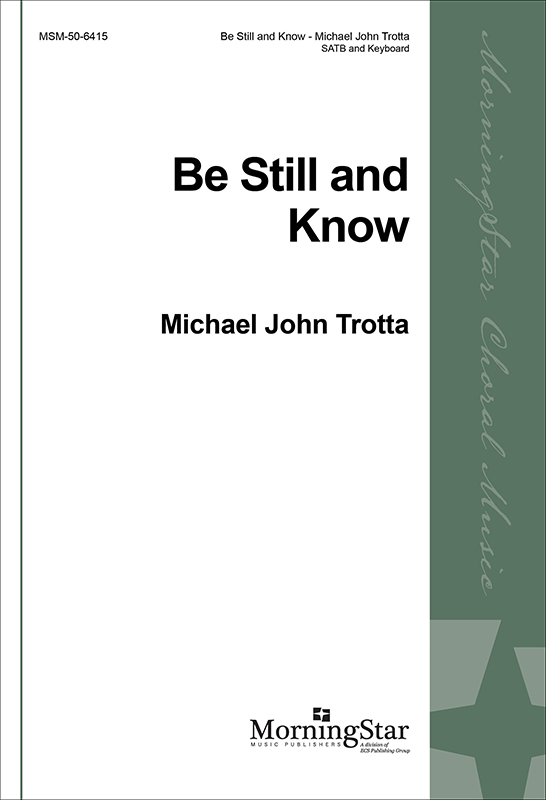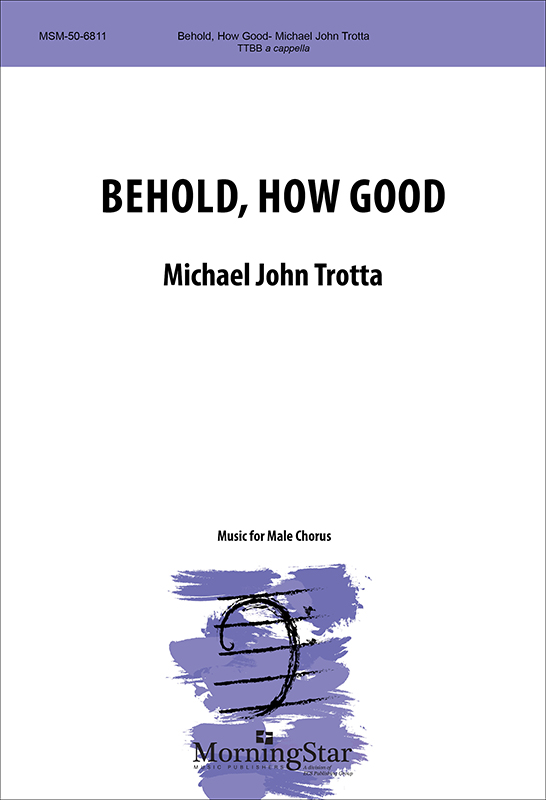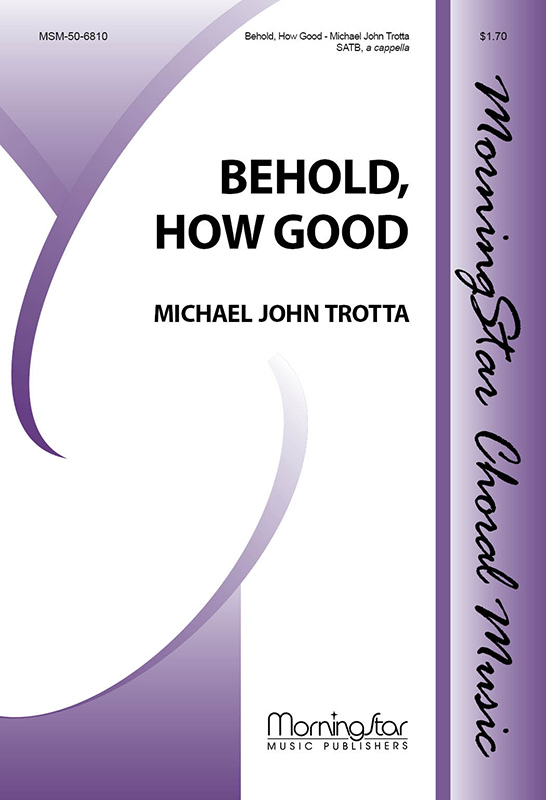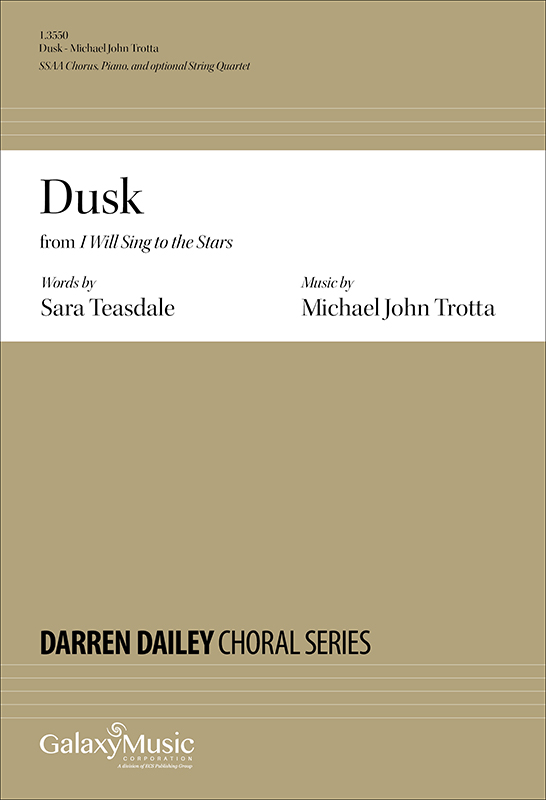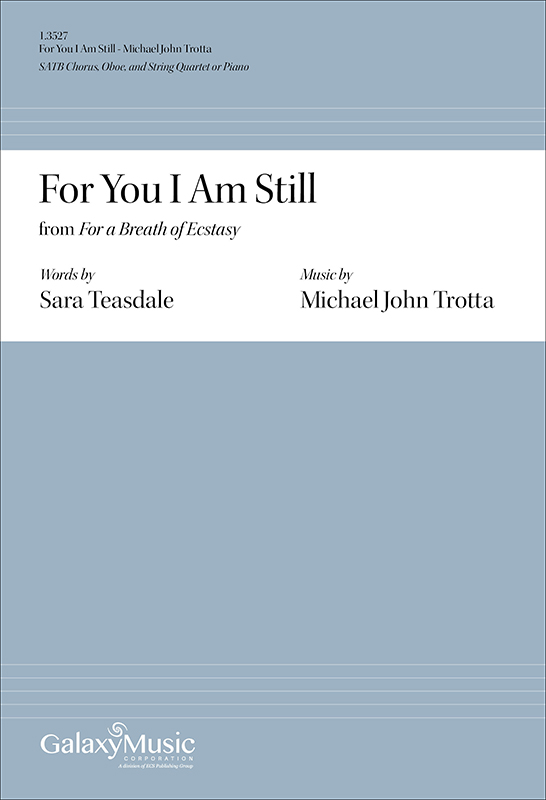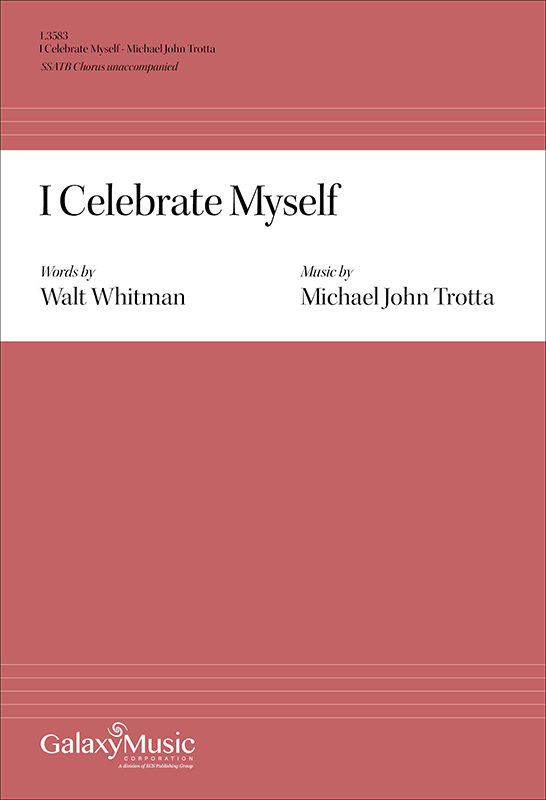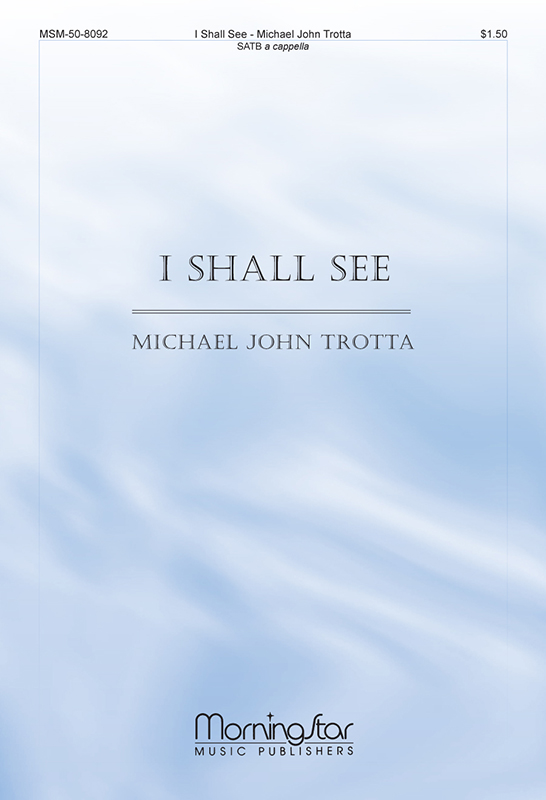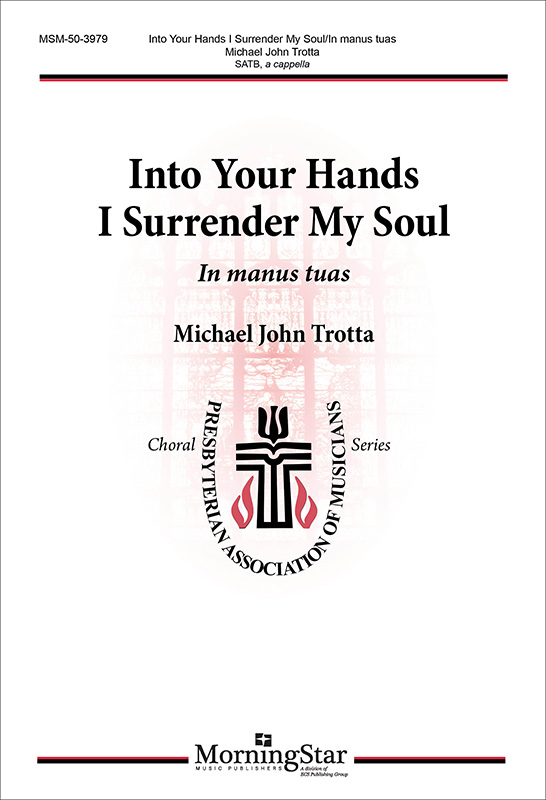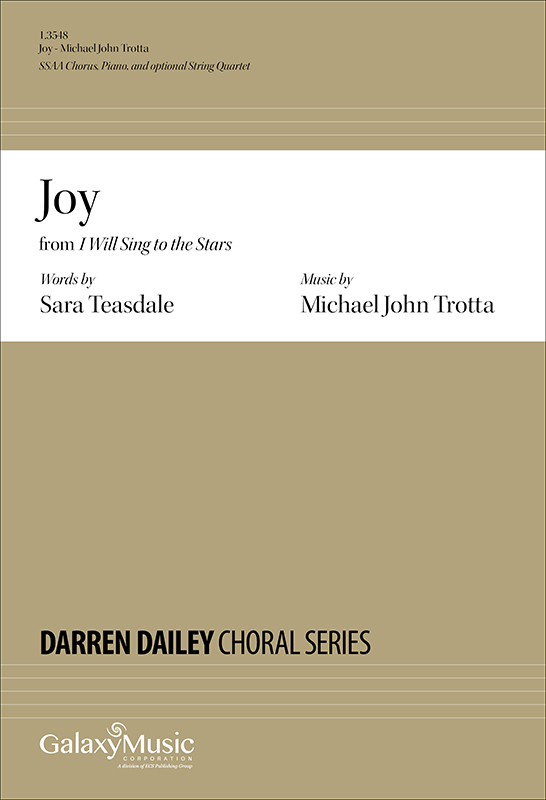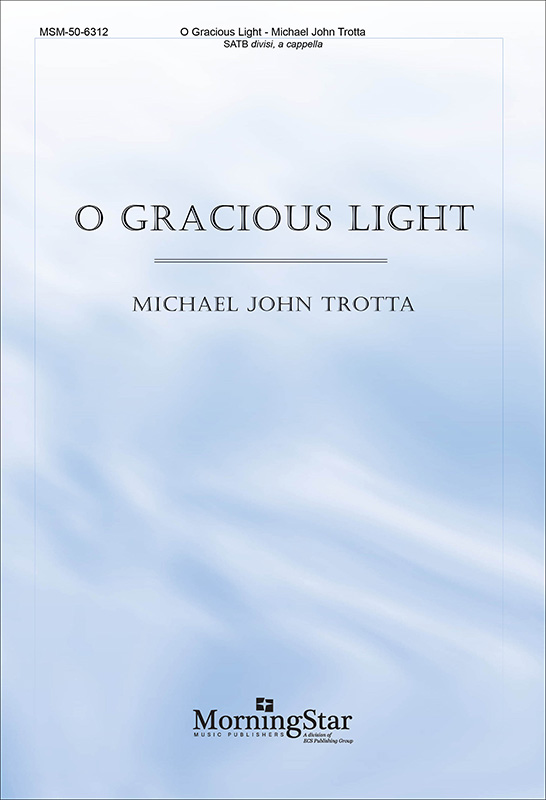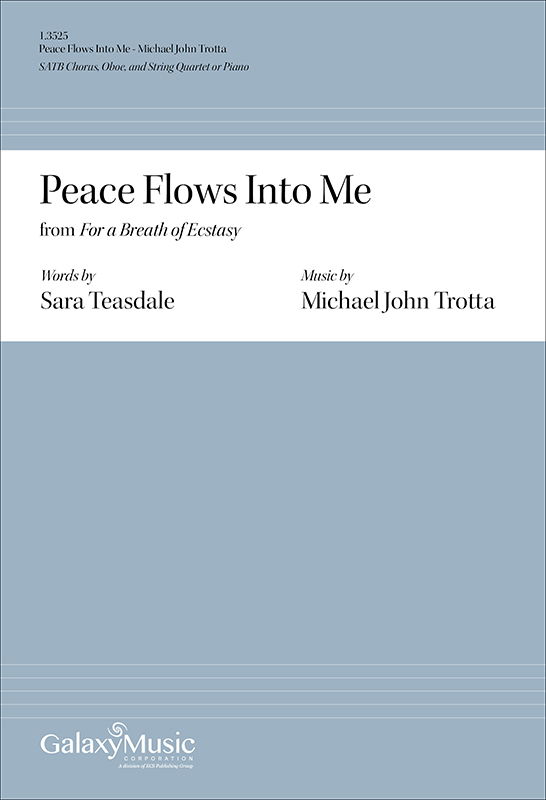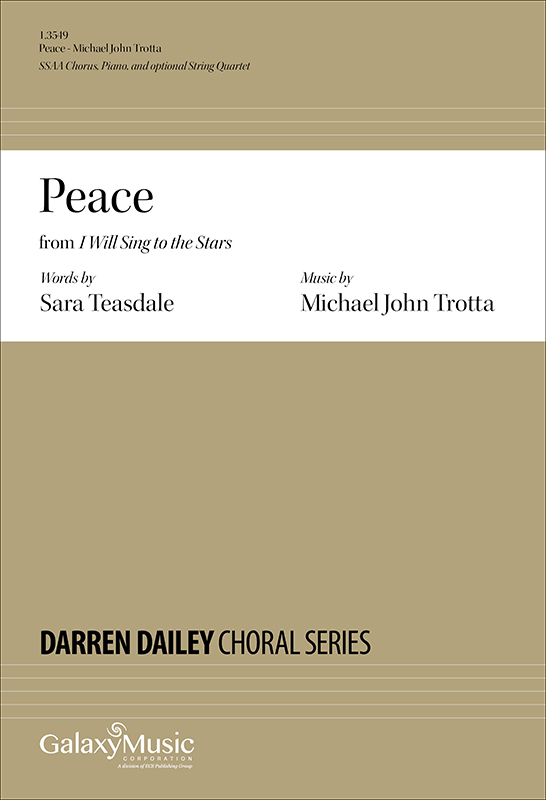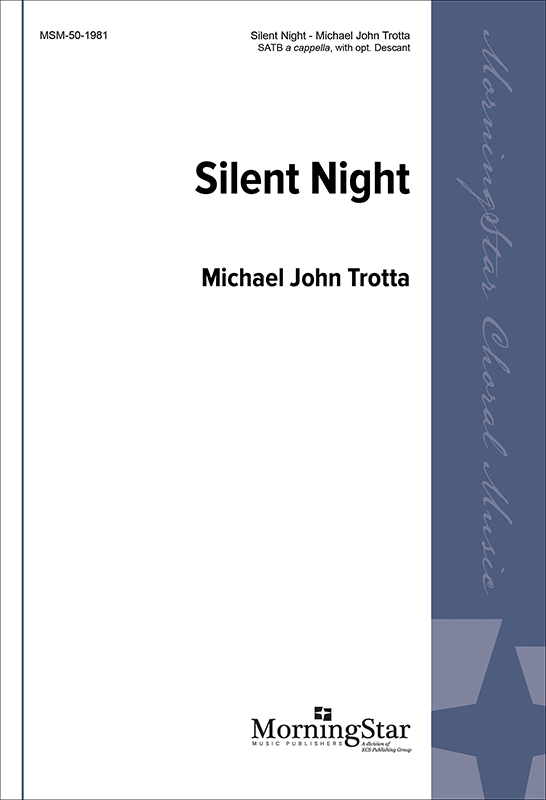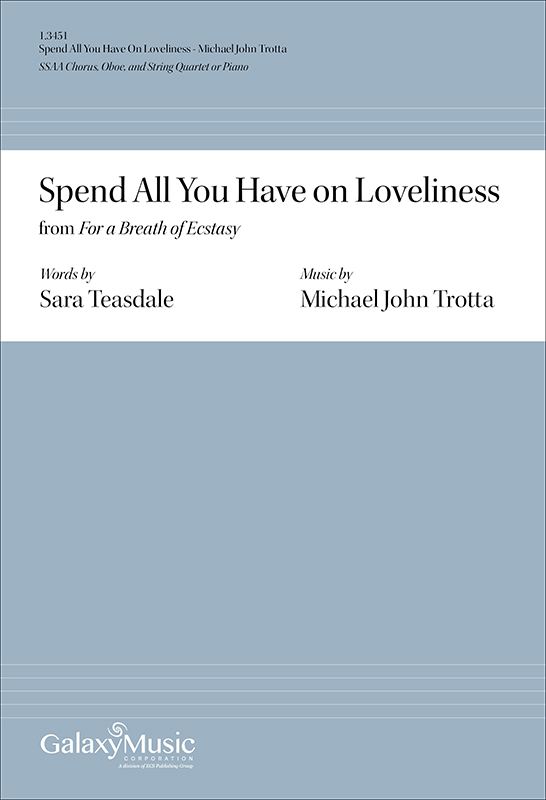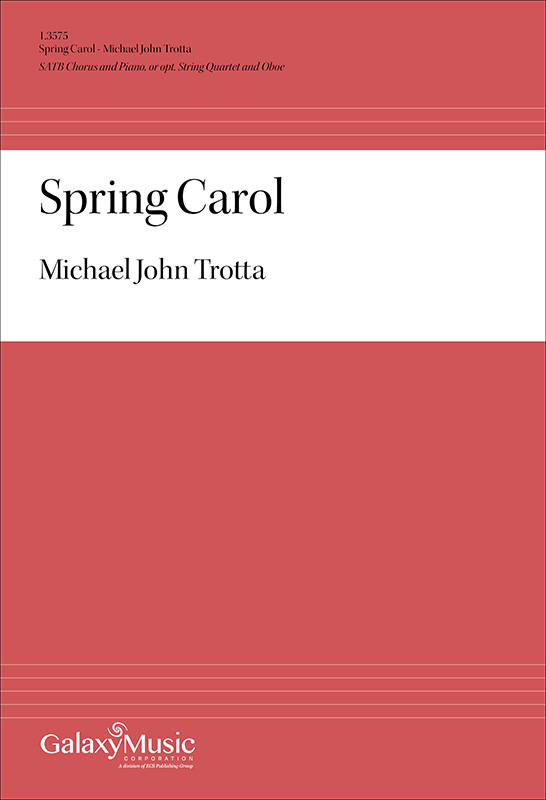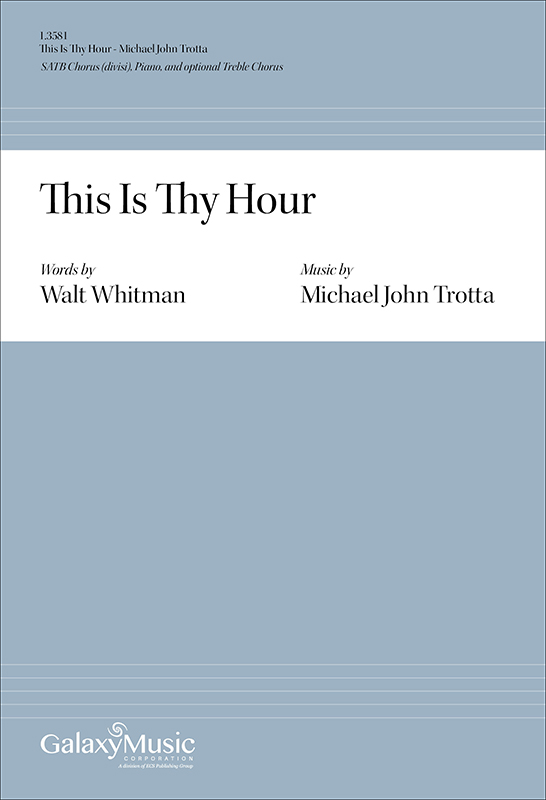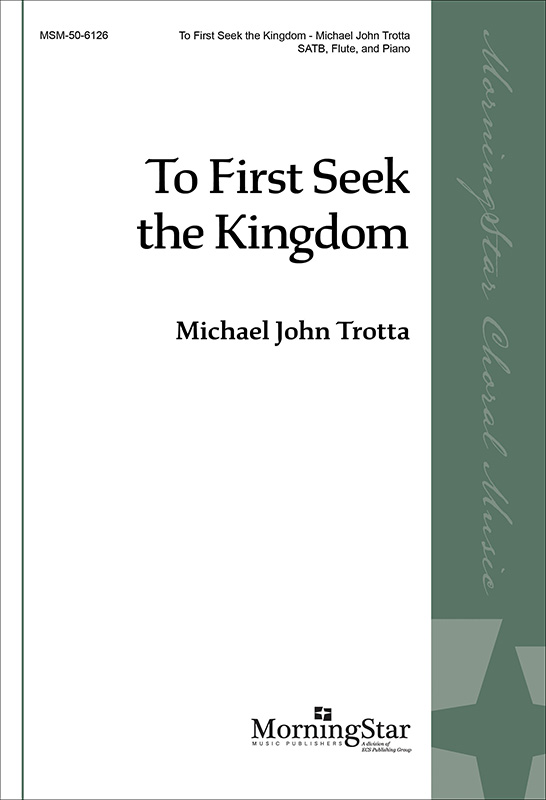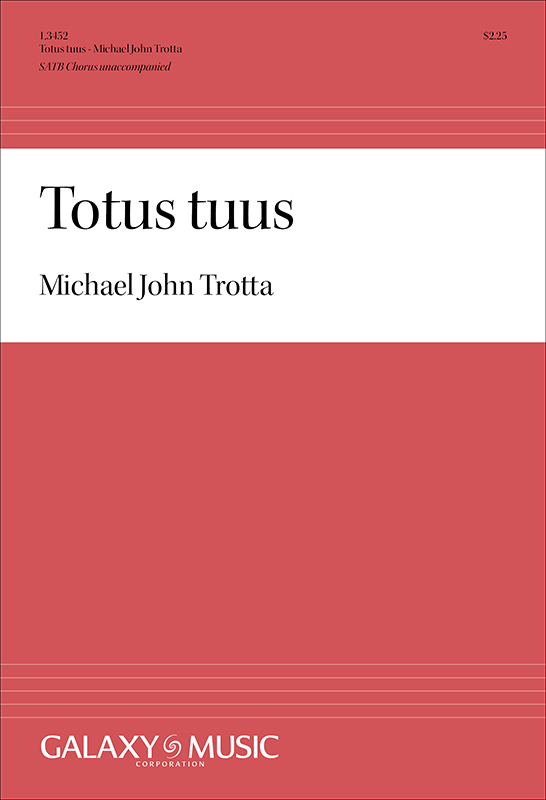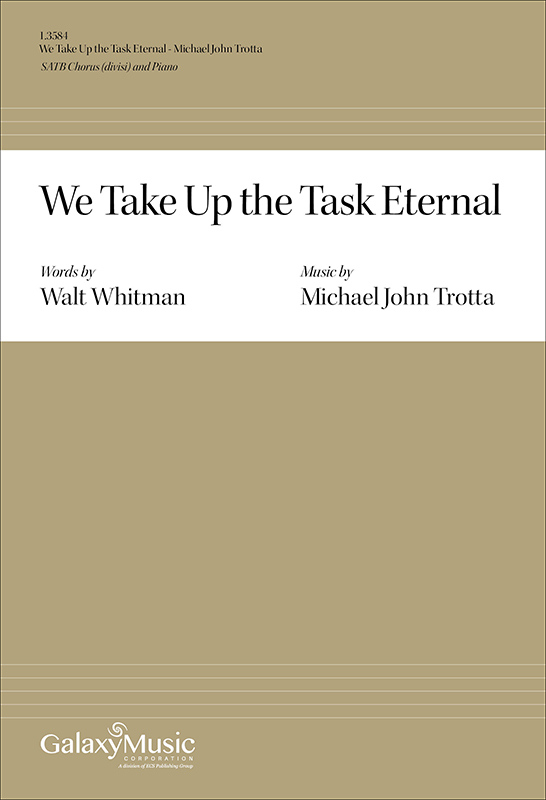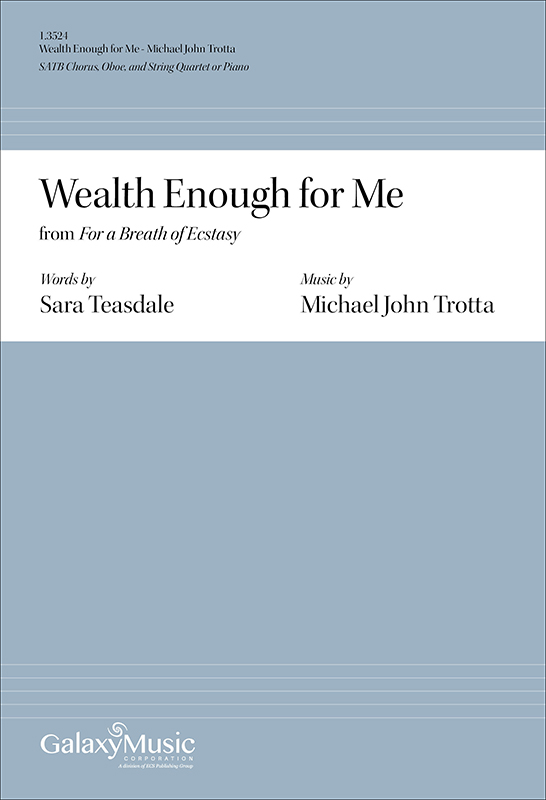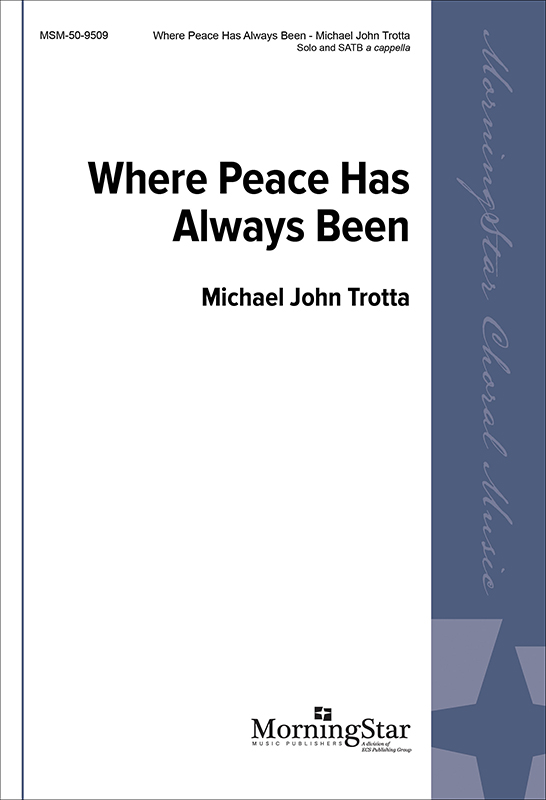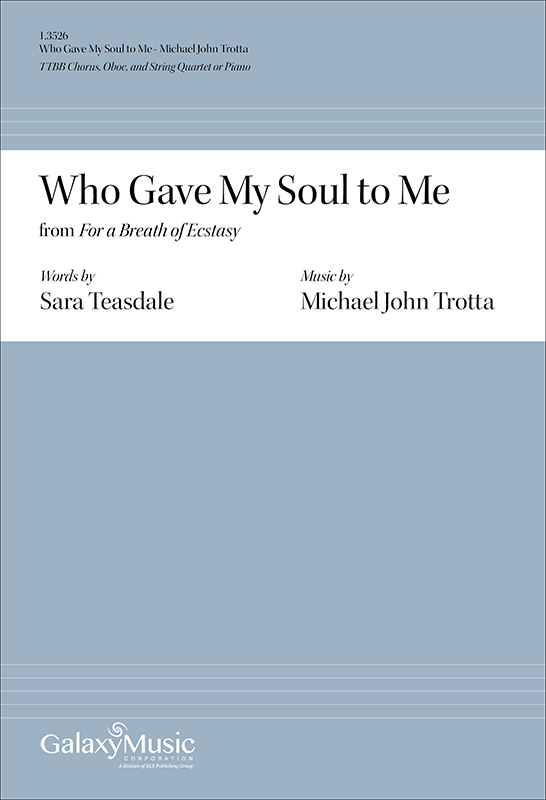In Celebration of the Human Voice - The Essential Musical Instrument
Home | Doo Wop | Barbershop | World | Contemporary | Christian | Vocal Jazz | Choral | Christmas | Instructional | Arrangements
Classical | Opera | Musicals | Personality | Young Singers | Disney | Videos | Songs | The Artists

Michael John Trotta

Fueled by a passion to share new music that engages conductors, ensembles, and audiences alike, Michael John Trotta (b.1978) is fast becoming one of the most "exciting and prominent new composers of choral music" (Fanfare). Drawing on his experience as a conductor and clinician, he brings artistry and excellence within reach for thousands of musicians each year. Prior to his work as a full-time composer, his experience as an educator at the elementary, middle school, high school, and university levels - as well as a church music director - infuses his works with "an intimate knowledge of the human voice" and a "rare sensitivity to the capabilities of a choral ensemble" (Fanfare). This, combined with his degrees in music education and a doctorate in choral conducting, have grounded his style in tradition, which blend with his modern sensibilities to "inform the thoughts and aspirations of the people and the time" (Choral Scholar) and to create "tender harmonies and a palette of glowing vocal and instrumental colors" (Gramophone). |
Songbooks, Arrangements and/or Media
Displaying 1-2 of 2 items.
Michael John Trotta : For a Breath of Ecstasy This work draws texts from Love Songs, the anthology of celebrated American poet, Sara Teasdale (1884-1933), and was commissioned to celebrate the centennial of her winning the first Pulitzer Prize in Poetry in 1918. Each of the movements of For a Breath of Ecstasy chronicles Teasdale's search for solace amidst life's many storms. The tapestry of different vocal forces set against the backdrop of Oboe and Strings reveals moments of yearning, love, joy, and peace. Vivid imagery portrays transcendent moments of solace that are revealed in an individual's relationship to nature and in love. Michael John Trotta : Seven Last Words (Septem Ultima Verba) This long-awaited major work is a seven-movement choral journey through the Passion, which delivers a powerful and captivating story encompassing a breathtaking palette of emotion, from intimate tenderness to majestic triumph. A rare gem, powerfully emotive and effective in both liturgical and concert settings. The work may be performed in either English or in Latin. Duration: 40 min. Songlist: Father, Forgive Them, Today, You Will Be with Me, Behold Your Son<, I Thirst, My God, Why Have You Abandoned Me?, Into Your Hands I Surrender My Soul, It is Finished |
Displaying 1-39 of 39 items.
This piece features close harmonies in the treble voices and uses a graceful melodic shape in the contrasting middle section on the text,"O Master, grant that I may never seek..."
The text is an excerpt from the Salve Regina, also known as the Hail Holy Queen, a Marian hymn and one of four Marian antiphons sung at different seasons within the Christian liturgical calendar of the Catholic Church. The Salve Regina is traditionally sung at Compline in the time from the Saturday before Trinity Sunday until the Friday before the first Sunday of Advent. The Hail Holy Queen is also the final prayer of the Rosary. Duration: 3:40
A haunting and contemporary arrangement of this wonderful old English carol. The subtle dissonance and tonal shifts make this a memorable and meaningful setting.
The harmonic language of this setting of "Amazing Grace" portrays a feeling of mystery and awe. Completely original music is matched with this most familiar text to create an experience that feels both familiar, but simultaneously transports the listener to someplace new. Very meaningful. Optional parts are included in the score.
This is the sixth movement of "For a Breath of Ectasy." Scored for SATB chorus, oboe, and string quartet or piano, the music is romantic and beautifully paints images found in the text: "The moon is a curving flower of gold." he accompaniment is lush and the choral writing is homophonic, with the sopranos only occasionally dividing. Duration: 3:12
This piece was written as an exploration of finding sanctuary from the hectic pace that is prevalent in today's society. The pedal point in the bass line introduces a placid texture from which a rich sonority unfolds. Based on Philippians 4:6.
A gentle a cappella setting of the traditional prayer to Mary. The texture is chordal throughout and offers an unpretentious treatment of the text, with occasional sharp dissonances adding a shimmering effect. For directors with a capable soprano soloist or section, an optional descent hangs angelically above the chorus, adding further interest and elegance to the work.
An original adaptation of Psalm 46. The arrangement features accessible, yet interesting, choral writing along with a flowing piano accompaniment.
A TTBB setting of the composer's very popular SATB version. An original text inspired by Psalm 133 is set for a cappella TTBB choir and soloist. Due to lovely writing and sensitive voice leading, this sounds more complex than it is. Your choir will love this calm, sonorous music.
An original text inspired by Psalm 133 is set for a cappella SATB choir and soloist. Due to lovely writing and sensitive voice leading, this sounds more complex than it is. Your choir will love this calm, sonorous music.
The well-known Shakespeare poem in a dramatic setting, featuring an interesting treatment of the text. The tambourine adds a new color to the performance. For mature high school and college choirs. Duration: ca. 3:50. Jo-Michael Scheibe Choral Series.
Poetry By: William Shakespeare
This piece may be performed as part of a collection of four Whitman settings under the master title, This Is Thy Hour. Understated elegance is the hallmark of this movement; the music reflects the simplicity of the text. A legato, unison line is introduced which is treated in canon in the middle section, which is eventually restated in the original key. Duration: 2:45
Written for the Jacksonville Children's Chorus, this SSAA setting of a Sara Teasdale text begins in unison. This verse structure is followed by a refrain and a canon between the two voices on the text, "the air is blue and sweet." The contrasting mid
In this fourth movement from "For a Breath of Ectasy," the introduction is mildly reminiscent of the third movement melody, and in fact the choral writing also hints at the interval of the fourth and fifth which are prominent in the previous movement. For SATB chorus, oboe, and string quartet or piano, the writing is calm and tender. Sopranos occasionally divide. Duration: 5:24
This hymn re-imagining is a lofty creation that explores this classic lyric with deeply expressive choral writing and colorful organ adornments. A full dynamic range is explored, and a section of mixed meter adds a lively modern aesthetic. A triumphant, powerful ending completes this noble concept with a satisfying exclamation mark!
This unaccompanied work contrasts a simple unison motif with quick ostinato in the lower voices. The homophonic refrain clearly declaims, "all forces have been steadily employed to complete and delight me." After building to a high point with a soaring descant for soprano, the work recedes in intensity with a harmonic restatement of the opening motif. Part of four Whitman settings, This Is Thy Hour.
Based on Psalm 27, the simple rhythmic texture of this piece makes for an accessible work for many ensembles. A simple harmonic palette is used to introduce the text in the first verse. A fuller sonority is reserved for the text "In times of trouble he shall hide me."
Taken from the major work Seven Last Words.
Written for the Jacksonville Children's Chorus, this SSAA setting of a Sara Teasdale text opens with a sort of call and response between the voices. The music then transitions to a contrasting key and a stark contrast featuring the chorus alone. The beginning theme is heard again, concluding the piece with the repeated text, "I love, I am loved." The first movement of the three-movement work, "I Will Sing to the Stars." Duration 2:50
The final movement from "For a Breath of Ectasy" begins rhythmically as the first movement did. In fact, the writing touches on moods and motives in many of the other six movements, although the text here is a different poem. Yet the movement stands perfectly well on its own, and the poem is sublime: "Oh, let me love with all my strength, careless if I am loved again." Duration: 4:14
Beautiful and emotional legato lines transform this Robert Louis Stevenson text into a classic choral work for treble voices. A simple piano accompaniment gently supports the caring vocal lines that ebb and flow with unison and harmonic singing.
Poetry By: Robert Louis Stevenson
While this ancient Greek evening hymn text Phos hilaron is set for a cappella SATB divisi voices, it is within the reach of most mixed-voice choirs. Michael John Trotta makes tasteful use of seconds in the harmonies, lending a modern sound to the largely homophonic writing. A contrasting middle section assigns a rhythmic melody to the sopranos and builds to a climax before returning to the original "unhurried" material. Observing the dynamic and tempo variations will ensure an expressive performance. Duration 3:00
Profound in its simplicity, this anthem unfolds organically revealing its truth with sincerity and beauty. Pristine melodic contouring is displayed at its best in a kaleidoscope of harmonic color, all dancing together to create an impactful worship moment/???///// / / / n .
With a glittering organ introduction, this anthe carries in its arms a message of divine illumination. Strong four-part writing dances with exquisite moments of layered counterpoint, creating a colorful tapestry of sound. Worshipful writing for ears, heart, and mind.
This second movement from "For a Breath of Ecstasy," is a cappella except for a short introduction and coda. The texture is SATB with a soprano descant in the first and last sections. The middle section ("piu mosso") is underlayed with a rhythmic motive in the men's parts which pulses below the more flowing women's parts. After the middle section builds to a strong emotional declamation ("they are all fulfilled in you,") The beginning material returns. Duration: 4:44
Written for the Jacksonville Children's Chorus, this SSAA setting of a Sara Teasdale text is set completely for unaccompanied voices. The text, "Peace flows into me...," is introduced on a single note, gently expanding to a fuller sonority. The next section features a straightforward declamation of the text, followed by a rhythmic ostinato that lays a foundation for legato vocal lines in the upper voices. The piece then concludes on the single note from which it began. The second movement of the three-movement work, "I Will Sing to the Stars." Duration 4:25
A big, fun festival piece. The children's choir part is prominent and often sings with or against the adults, so it's essential. The SATB writing varies from full chords to quick imitative passages to a quiet chorale-like section. The accompaniment is flashy and could be effectively done on either piano or organ. In fact, a full orchestra accompaniment is available, with winds in pairs, two percussionists, harp, and strings. Duration: 4:00
Using the familiar text but all-new music for SATB a cappella, this setting is conceptually choral in nature, as opposed to just a melody with accompaniment. Text is underlaid as background in places, some places are homophonic, with an aleatoric section. There is a descant for a small group of sopranos (or one). Beautiful, unusual, and useful for any choir from advanced high school through professionals.
American poet Sara Teasdale (1884-1933) won the Pulitzer Prize for her 1917 collection of poems titled Love Songs. The text for this song is taken from "Barter," the first in this set of poems. Despite the poet's history of poor emotional and physical health, the text captures a hopeful attitude that foreshadows the spirit of optimism that was the precursor to the Roaring Twenties. A rhythmic piano part is the foundation for a captivatingly lyric melody that gently unfolds throughout the piece. The setting begins with the simplicity of a unison vocal line that gradually expands as the piece explores the complexities of the wonder of everyday life. Subtle text painting captures the poet's desire to seek refuge in the beauty that surrounded her. Duration: 3:49
Poetry By: Sara Teasdale
Based on text by Robert Louis Stevenson, the piece has a rousing melody set in compound duple meter. The music depicts the imagery of streamlets gushing and the many sounds of rejoicing nature that accompany spring. A brief section in simple meter portrays a scene of pastoral tranquility. The piece finishes with the intial melody accompanied by a soaring descant. Duration: 3:15
Trotta's fine vocal writing sets a text adapted from Stein's poem into a picture postcard of winter beauty. The piano is rhythmic with forward motion under interesting vocals lines that paint each phrase. There were frosted-painted people, and a frosted church and steeple and a frosted bridge and river tumbling over frosted rocks. A superb selection for women's voices and treble choirs.
This piece may be performed as part of a collection of four Whitman settings under the master title This Is Thy Hour. A majestic opening heralds the hour that unfolds to a rhythmic ostinato that acts as the underpinning for the text of This Is Thy Hour. A plaintive middle section contrasts with legato vocal lines for the text "thee fully forth emerging." The work concludes revisiting the opening material, and ends with triumphant, homophonic chords before ending with a restatement of the softer middle section, expressing the wonder of that which the poet loves best. Duration: 4:30
This is the kind of piece that might sound more difficult than it is. Michael Trotta employs an economy of choral writing: The SATB parts are sometimes unison, move often by steps, are repeated in the outer sections, and have only occasional divisi in the treble voices. The text is an innovative combination of Old and New Testament passages, put in a question-and-answer format with the question sung in a subdued matter and the answer intensifying in range, complexity, and volume. The piano and flute parts flow more quickly than the voices-save for a short, contrasting middle section-and provide an underlying momentum to this expressive work. Duration: 4:30
Louis de Montfort wrote the text used in this setting in the early 18th century. It is a hymn of devotion and total surrender to a power greater than oneself. The lush extended harmonies proceed from an pedal point and continue in straightforward rhythm making the piece at once accessible yet giving new life to the ancient text. Even the most dissonant moments of the work remain firmly planted in the diatonic scale. The thoughtful voice leading enables this piece to be used in both liturgical and concert settings. Duration: 4:50
Cast in three sections, the music opens with the chorus singing a triumphant call to action. The second section introduces a simple theme which is sung by the upper and the lower voices consecutively. The middle section features the upper and the lower voices in close harmonies musing on the wonder of the stars and planets. A musical palindrome, the work then restates the simple theme, ending with the triumphant call. Part of four Whitman settings, This Is Thy Hour.
This first movement from "For A Breath of Ecstasy" has accessible choral parts and a very active accompaniment, perhaps representing the "my thoughts" Part of the text. A contrasting middle section ("With Wonder") still retains a certain rhythmic pulse, before the return of the opening material. The movement ends with the touchstone phrase, "I must spend them all in song." Duration: 4:49
The composer uses his own original text to speak hope to conditions of loss or uncertainty. Mostly homophonic in structure with a solo descanting voice, the music is approachable and sonorous, the combined effect is one of calm reassurance.
The fourth movement from "For a Breath of Ectasy" is set for TTBB Chorus, oboe, and string quartet or piano. After a calm start, a rhythmic motive begins in the bass clef of the accompaniment during the introduction and intensifies as the singers enter with the first statement of the text. There is an instrumental interlude, a recap of the entire text, and a coda. he choral writing is approachable, often beginning in unison, moving to two part and then to four parts for the last phrase and cadence. Duration: 4:35
The contrast between the cold of winter and the warm rays of light found in nature at this time of year, make this ideal for emerging choirs looking for secular seasonal repertoire. Conservative vocal ranges, cued optional notes, text painting, and a canonic second part all add to the accessibility of this piece.
![]() Vocal Harmony Arrangements - Home
Vocal Harmony Arrangements - Home
Christian | Gospel | Standards | Musicals | Specialty | World | Barbershop | Contemporary | Vocal Jazz | Choral | Christmas
Mixed Voices | Female | Male | 8 Parts | 6 Parts | 5 Parts | 3 Parts | 2 Parts | Medleys | Solo | Folio Series | New Releases
Select a Category |
Want to Sing? - Find a Chorus Near You
List of Choruses by State | List of Choruses by City

